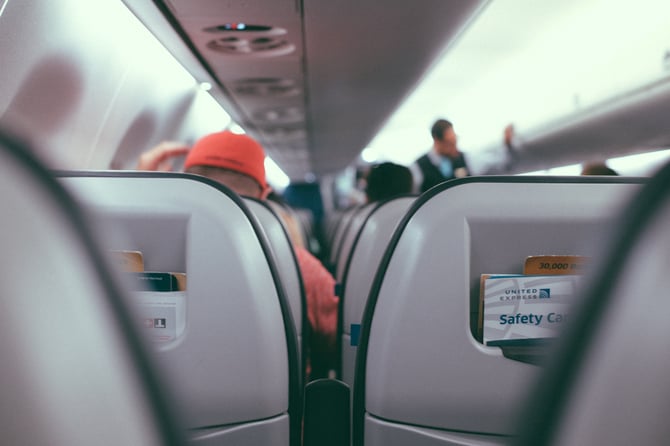
Airline Pricing is Confusing
If you spend any time researching on the internet for a flight you'll soon find that the price can be high one week, low the next - and the really confusing thing is that long-haul flights can often be cheaper than short haul destinations.
Why is it confusing?
Well, it's called airline revenue management which is the science of dynamically adjusting fares in real time so that airlines can maximise their revenue. It isn't just a case of supply and demand as airlines are now relying heavily on increasingly sophisticated software that takes into account a broad range of factors from overall conditions across their global networks, right down to the individual preferences of their passengers.
Airline Pricing Before 1978
Commercial aviation has been around for a long time and there was a time when it was only available for the well-to-do. The airline industry operated in a tightly regulated environment and there was very little competition on fares.
The international routes were invariably proudly operated by the flag carriers of the countries involved and, because there was limited competition in fare-setting the airlines could more or less charge whatever they thought appropriate.
Global liberalisation, which started with the US Deregulation Act of 1978, changed everything about the airline industry, from the industry structure to the way we think about air travel - and, most importantly, airline fares.
How Things Have Changed
Robert W. Mann, a consultant and former airline planning executive says:
"THE GROWTH OF THE NETWORK AIRLINE AND THE DROP IN THE COST OF COMPUTING HAS BROUGHT REVENUE MANAGEMENT TO WHOLE NEW LEVELS OF SOPHISTICATION."
The Use of Expected Marginal Seat Revenue
Expected Marginal Seat Revenue (EMSR) looks at the best ways to optimise fares in real time, not only on a given
This is why, for example, flying from London to Dubai may cost pretty much the same as flying all the way to Hong Kong, also via Dubai. The airline may prefer to keep seats on the London-Dubai leg for higher-value passengers that fly longer onward
Customer Profiling is Hugely Important
You may wonder how the airlines know who the higher-value passengers are and how much to charge them? Well, they use something called customer profiling and decide, based on the destination of the flight, what sort of passengers will most likely be using that route.
The Balearic
This is contrary to a typical business route, say London to Frankfurt, where prices start off low to fill a minimum capacity and then rise sharply nearer the date of departure. Business travellers are much less price sensitive because, in the majority of cases, they are not paying for the flight themselves.
These last-minute, high-value passengers are so important and high yielding that some airlines will go all out to accommodate them, offering compensation to the "
Airlines have dozens of fare subdivisions (nothing to do with First/Business/Economy) and they adjust the number of seats allocated to each fare class. When one subdivision has been fully sold, the sale price will transfer to the next one.
Airlines Want Personalised Pricing
What airlines are really aiming for is fully personalised pricing. Revenue management systems will increasingly take into account not only the airfare
This kind of profiling might be beneficial to the loyalty programme customer but what about when a frequent business traveller is then consistently shown higher fares when they're trying to book a family holiday? This could well prompt a backlash among the sort of high-value customers that every airline hopes to retain.
While airlines may have good reasons not to overcharge their best customers, they also have to be careful not to undercharge the rest. The temptation is to aggressively lower prices when there are still vacant seats before a flight departure, but if this becomes the norm there's a serious risk of undermining the airline brand and alienating higher-value passengers.
Apps That Cater to Consumers' Pricing Needs
A number of companies, such as Bidflyer, Plusgrade and SeatFrog, have come up with applications that allow airlines to sell upgrades to the highest bidder through an anonymous auction, an efficient way to allow passengers to inform the airline how much they're willing to pay for premium services.
Passengers can also use companies such as Skyscanner and Kayak and receive automated fare alerts the moment fares change. Some companies are also developing fare prediction technology that promises to help travellers book their flights at the optimal
Back to Basics with Branded Fares
The apparent randomness of airfares makes for an excellent topic of conversation with friends and colleagues, but perceptions that prices are so variable can create a fear amongst passengers that they are not getting the best deal.
Which is why many airlines have opted for a different approach: go back to basics and offer branded fares - including a bundle of services, for a fixed price. This is an evolution of the low-cost fare system which lets customers choose the extras they want to add to the base fare.
It will involve
Examples of Branded Fares - easyJet and Ryanair
Ryanair has launched a “business plus” product, which starts from £59.99 compared to normal fares that start from £19.99, and which allows passengers to make changes to their flights up to 40 minutes before their original flight was due to depart for no extra fee, although any difference in ticket prices will have to be met.
Business travellers will also be offered a 20kg baggage allowance – which can ordinarily cost £75 in high season – plus “premium” seats at the front of the aircraft cabin or in aisles where there is extra leg room.
easyJet, which estimates one in five of its customers travels on business, introduced a more flexible fare in 2010 to target the corporate travel market. easyJet’s “FLEXI fare” product includes unlimited changes,
If a business traveller logged on to easyJet’s website the last week in August, wanting to travel to Amsterdam and back on September 2 on the first and last flights, they would have been offered a “FLEXI fare” of £198.98 compared to a standard fare of £91.98.
The revolution in budget air travel has forced the legacy carriers such as British Airways to up their game as well. BA has taken a leaf out of its low-cost rivals’ book by offering cheaper hand luggage-only fares.
AI Will Rule Airline Prices in Years to Come!
There's currently an awful lot of computer technology being thrown into the field of airline pricing and with the expectation that artificial intelligence technology will go mainstream, it might ultimately be up to robots to fight the airfare war! This is not necessarily a bad thing because it may well result in greater choice and more efficient booking processes.
Related Posts
How to Implement Dynamic Pricing Without Harming Your Bottom Line
6 Tips to Improve Your Dynamic Price Optimisation Model
6 Core Elements of Dynamic Pricing
Grab Your Passport - Here are the Latest Travel Industry Pricing Trends
Sources
https://ww.lhsystems.com/solutions-services/commercial-solutions/revenue-management-pricinghttp://airlinerevenuemanagement.com/revenue-management/
http://edition.cnn.com/travel/article/airline-pricing-secrets/index.html
http://www.bbc.co.uk/news/business-40702493
http://www.telegraph.co.uk/finance/newsbysector/transport/11059009/From-budget-to-business-how-the-low-cost-airlines-are-winning-us-over.html
https://flightfox.com/tradecraft/how-do-airlines-set-prices



